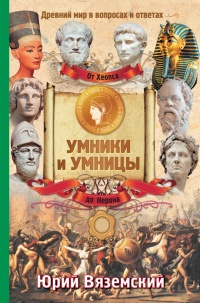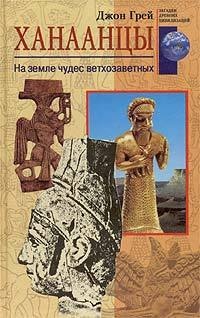Книга Библейский Израиль. История двух народов - Игорь Липовский
Шрифт:
Интервал:
Закладка:
Эфрайин, город в центральной Палестине в области колена Биньямин — 383
Эфрат — см. Вифлеем
Эфрон, сын Цохара, хетт, первоначальный владелец пещеры Махпела — гробницы патриархов — 53
Эхуд (Аод), биньяминянин, израильский судья, разгромивший моавитян — 219, 225, 252
Эцион-Гебер, иудейский город-порт на Красном море — 283, 284, 331
Эшколь, союзник Авраама — 28, 177
Эшнунна, аморейское царство в Месопотамии — 87
Ю
Юбилеев книга, апокриф Ветхого Завета — 42
Южное царство — см. Иудея
Я
Яббок, приток реки Иордан — 43
Явеш-Гилад, город и область в израильском Заиорданье — 228, 355
Явин (Иавин), династия царей Хацора, города и царства в северной Палестине — 234, 251, 272
Явнэ, иудейский город — 408
Ямхад, аморейское царство в северной Сирии — 87
Ярмут, город в южной Палестине — 197
Яхве (Вечносущий), подлинное имя Бога древнееврейских племен, открытое Моисею — 135, 529
яхвизм, культ Бога Яхве, превращенный Моисеем в первое в мире монотеистическое учение — 191, 218, 219, 221, 224, 233, 236, 237, 260, 261, 263, 291, 294, 307, 310, 316, 319, 320, 327, 332, 341, 344, 351, 375, 378, 401, 406, 408, 412, 416, 416–420, 434, 435, 446, 474, 507, 510, 512, 514, 517–530, 540
«Яхвист» (J), тексты Пятикнижия, созданные в Южном царстве (Иудея) — 9, 292, 531
Яхмос, египетский фараон, основатель XVIII династии и Нового царства в Египте — 93–95, 110, 120
Яэль (Иаиль), жена вождя кениев, вставшая на сторону древнееврейских племен — 251
This book is dedicated to the most mysterious and controversial events of a period in biblical history that spans almost fifteen hundred years: from the time of the patriarch Abraham to the destruction of the First Temple. On the basis of the biblical texts and ancient Near Eastern sources, the author presents an entirely new view of the history of Early Israel and the origin of the Hebrew tribes and their kingdoms: Israel and Judah. The book takes a new look at the epoch of the patriarchs, the sojourn in Egypt, the Exodus, and the conquest of Canaan. The author, a professor of Near Eastern history, corroborates many of the facts mentioned in the Bible, and finds that the real story, decoded from biblical texts, is considerably more interesting, dramatic and exciting than anything we have known before.
The original homeland of the ancient Semitic peoples, including Hebrews, was not northern Arabia, as had been thought, but the northwestern Mesopotamia, the upper courses of Euphrates and Tigris. Approximately, 6000–5000 years B.C.E. the ecological catastrophe in the Black Sea area set into motion the Indo-European tribes that subsequently displaced the Semites and the Hurrians to south: to Mesopotamia, Syria and Palestine.
The biblical family, in actuality, was a group of closely-related peoples and the biblical patriarchs represent the leaders of entire tribal unions. Abraham was not merely the head of his family, he was the leader of a large group of tribes which divided up over time into separate and independent peoples. The move of the biblical family from Ur to Haran and from Haran to Canaan, as well as the temporary departure into Egypt, turned out to be the movements of the Western Semitic nomadic peoples. Within the intricacies of the personal lives of Abraham and Lot, Isaac and Ishmael, Jacob and Esau, the history of their peoples is hidden. The new faith of Abraham was not a monotheistic revolution yet, but the adoption of the cult of supreme Canaanite god El.
An analysis of the book of Genesis allows us to suppose that the genealogy of biblical family constitutes an expert combination of the legends of two different tribal groups — the southern and northern, which arrived in Canaan and then left for Egypt at different times. The name of the patriarch Jacob-Israel in fact masks two forefathers of Hebrew tribes. Their single genealogy, as well common history, were only composed during the United Kingdom in the first half of the 10th century В. C. The majority of biblical history with which we are familiar, up until 12th century B.C., only represents the history of the southern tribal group „Jacob“, to which were later added a few fragments from the past of the northern group „Israel.“
The book consists of 12 chapters and an epilogue as well as an index and a bibliography. Chapter one deals with the ancient homeland of the Semitic peoples and the reasons for its abandonment. Chapter two sheds new light on the ethnic origin of the patriarchs, the concept of «biblical family», and its migration to Canaan. Chapter three is concerned with the long sojourn of the Hebrew tribes in the Nile Delta and the lack of relevant biblical and ancient Egyptian records. Chapters four and five present a novel analysis of the circumstances surrounding the Hebrew tribes* departure from Egypt. In chapter six the author presents new reasons for the lack of agreement in the understanding of Canaan’s conquest by biblical scholars and archaeologists. Chapter seven covers the Israelite tribal union, its leaders, and their religious beliefs. Chapter eight illuminates the causes underlying the formation of the United Kingdom and the shifting balance of tribal power. Chapter nine exposes the roots of the antagonism between the kingdoms of Israel and Judah and predicts the ensuing breakup of the United Kingdom. Chapter ten is dedicated to the northern tribes of Israel and refutes the myth of their disappearance following the fall of Samaria in 722 В. С. E. The southern kingdom of Judah is described in chapter eleven, which also focuses on the mistaken conception of Babylonian exile as a total deportation of Judeans. Chapter twelve examines the history of Yahwism, Canaanite cults, and the Aaronite-Levite conflict. The epilogue summarizes the results of ethnic and religious changes in Palestine preceding the construction of the Second Temple.
The author finds novel answers to the contradictions between facts mentioned in the Old Testament and archeological discoveries of the last decades. The book unravels some of the most mysterious and controversial events of biblical history, and contains important discoveries in the field of biblical science. Despite its high scientific level, the book is written in a style that is clear, engaging, and easily accessible to the general public.

























